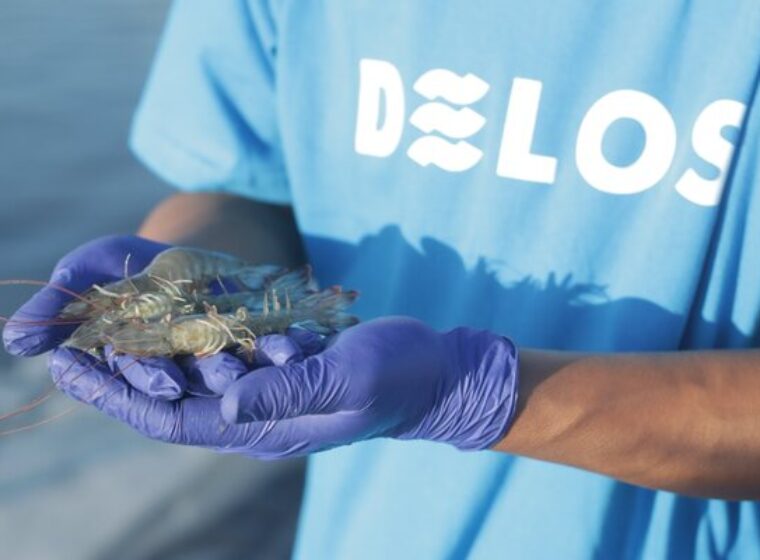Acute Hepatopancreatic Necrosis Disease, also known as AHPND disease in vannamei shrimp, is a problem that farmers often face. This disease can cause mass death resulting in heavy losses and harvest failure.
Acute hepatopancreatic necrosis disease (AHPND) originates from a bacterial infection with a strain of Vibrio parahaemolyticus (Vp AHPND). This disease is also known as early mortality syndrome (EMS), which can cause farm productivity to decrease by up to 60% and result in considerable losses.
To be on time in carrying out mitigation if attacked by AHPND, farmers must know its characteristics. Here we summarize some of the characteristics of Acute Hepatopancreatic Necrosis Disease (AHPND) that you can use as a reference.
Also Read: Vannamei Shrimp Probiotics and Its Benefits for Cultivation
What is AHPND?
Acute Hepatopancreatic Necrosis Disease or AHPND disease in vannamei shrimp is a disease caused by bacterial infection with the Vibrio parahaemolyticus (Vp AHPND) strain.
AHPND disease first appeared in China in 2009 and then spread to Vietnam in 2010, Malaysia in 2011, Thailand in 2012, Mexico in 2013, the Philippines in 2015, and South America in 2016.
As a result of the outbreak of AHPND disease in vannamei shrimp in these countries, shrimp production has decreased by up to 60%, resulting in considerable losses.
Not only attacking vannamei shrimp, but AHPND disease also attacks other shrimp species, such as P. monodon (tiger prawn), M. rosenbergii (giant prawn), and other types of crustaceans.
Usually, shrimp in the early life phase is more susceptible to AHPND infection. Furthermore, AHPND attacks the digestive glands (hepatopancreas) and destroys hepatopancreatic cells R (resorptive), B (blister), F (fibrillar), and E (embryonic) which results in organ dysfunction leading to massive death.
Also Read: Get to Know Myo IMNV Disease in Vannamei Shrimp and Its Characteristics
Characteristics of AHPND Disease in Shrimp
Vannamei shrimp infected with AHPND usually look lethargic and exhibit abnormal swimming behavior. Apart from this, here are other characteristics when shrimp have been infected with Acute Hepatopancreatic Necrosis Disease.
1. Infecting the Early Life of Shrimp
Acute Hepatopancreatic Necrosis Disease in vannamei shrimp infects in the early phase of cultivation, from the 1st to the 35th day of cultivation. Usually, this will be followed by the mass death of up to 100% of the stocked shrimp.
2. Shrimps Have No Appetite
AHPND disease causes shrimp to have no appetite and thus show symptoms of anorexia. Furthermore, this symptom is followed by emptying the digestive tract and loss of tissue pigmentation.
3. Shrimp growth slows down
Shrimp with no appetite due to AHPND infection indirectly triggers slower shrimp growth. This is because the growth of shrimp is directly influenced by the food consumed.
4. The digestive tract becomes empty
Shrimp that has been infected with AHPND disease show an empty digestive condition. Because this disease attacks the digestion of shrimp directly.
5. Hepatopancreas Turns Pale
When infected with AHPND disease, the vannamei shrimp hepatopancreas tissue will experience fragility at the beginning of the infection. Then as the disease progresses, this tissue will become pale and rigid.
6. Appearance of Black Spots on the Hepatopancreas
After becoming pale and rigid, the next phase will appear with black spots or fine lines on the hepatopancreas. These black spots indicate foci of melanization in the tubular cells of the hepatopancreas.
7. High Mortality Rate
The death rate from AHPND disease in vannamei shrimp reaches 100% in most countries. However, in several other countries, it shows the opposite, namely a low death rate.
The difference in tolerance for death rates is because regions with low mortality rates have had a history of similar diseases. This makes the vannamei shrimp’s immune system better compared to other areas.
How to Overcome AHPND Disease in Shrimp
Only now the treatment for AHPND disease in vannamei shrimp is known with certainty. However, farmers can take preventive measures in farm management, for example, by aeration, providing appropriate feed, and maintaining pond water quality.
Diseases caused by pathogenic bacteria in vannamei shrimp are generally controlled using appropriate management strategies, including immunostimulant supplementation, prebiotics, probiotics, maintaining water and feed quality, and maintaining pond aeration.
However, this control cannot stop the spread of the disease when the vannamei shrimp have been attacked by Acute Hepatopancreatic Necrosis Disease. Conventional approaches such as stopping feeding or giving disinfectants can be another solution, although the success rate is also relatively low.
Also Read: Get to Know the Covert Mortality Nodavirus (CMNV) which Can Attack Vannamei Shrimp
Prevent AHPND Disease in Vannamei Shrimp with DELOS!
Until now, there is no known way to deal with Acute Hepatopancreatic Necrosis Disease or AHPND disease in vannamei shrimp. However, farmers can take early prevention by carrying out proper farm management.
Therefore DELOS has Farm Management that can assist you in managing shrimp farms following international standards.
With a scientific and operational team that has been reliable and experienced for years, DELOS is ready to assist you in managing shrimp farms, including mitigating if the disease is detected in your shrimp farms.
To become part of DELOS, contact@delosaqua.com or ask questions via the contact box on our website www.delosaqua.com. Trust your shrimp farm management to DELOS!




